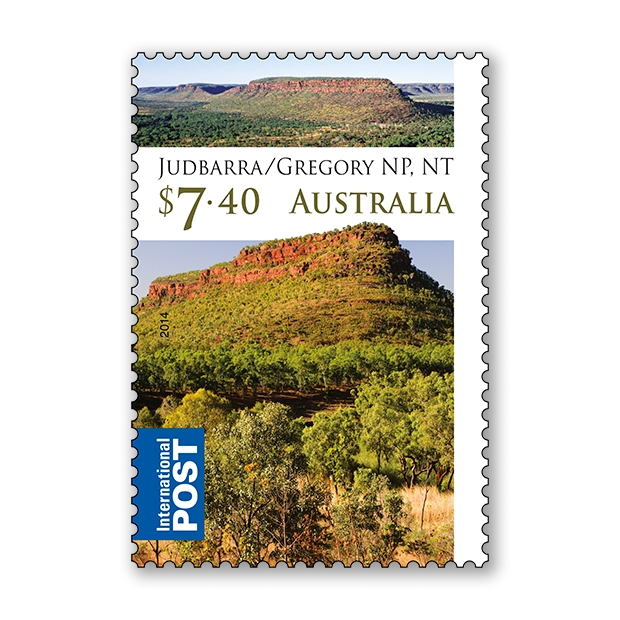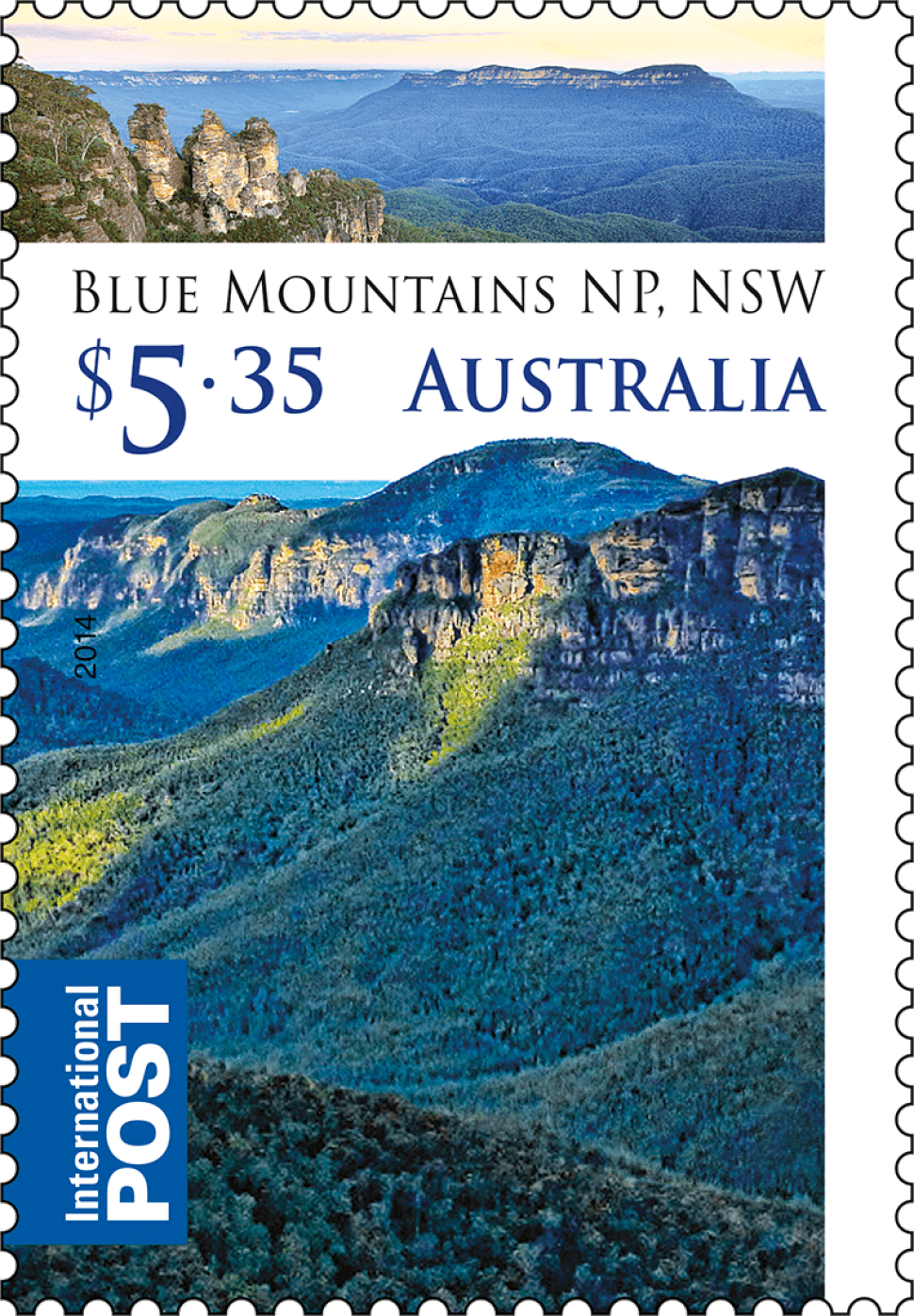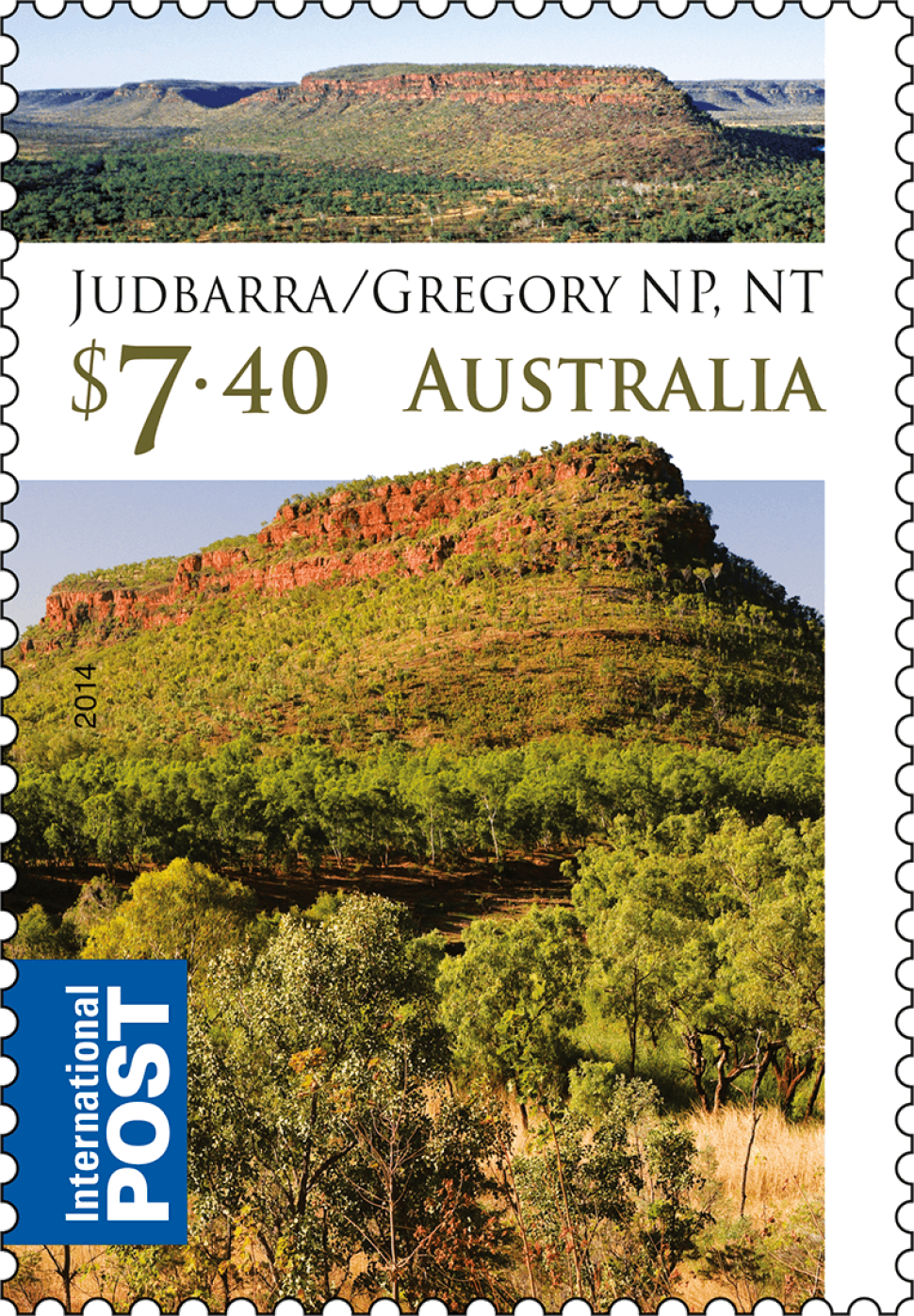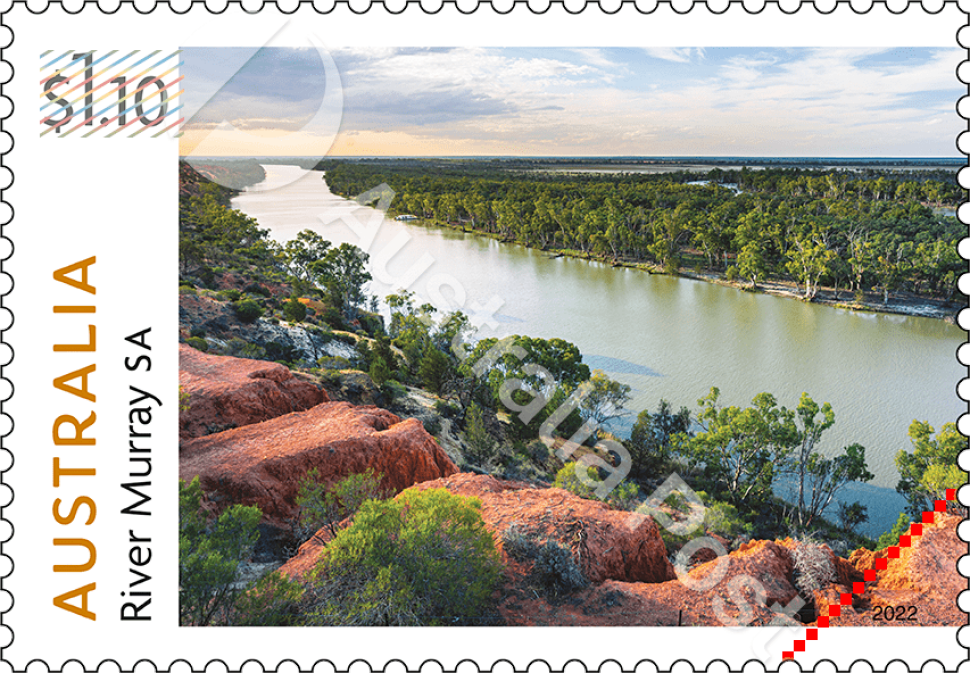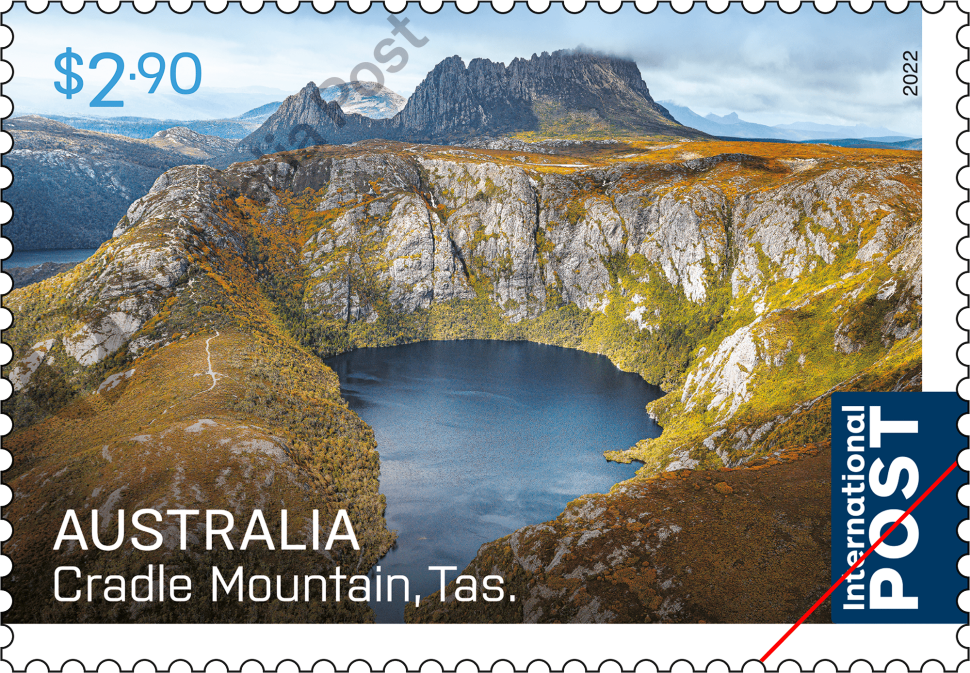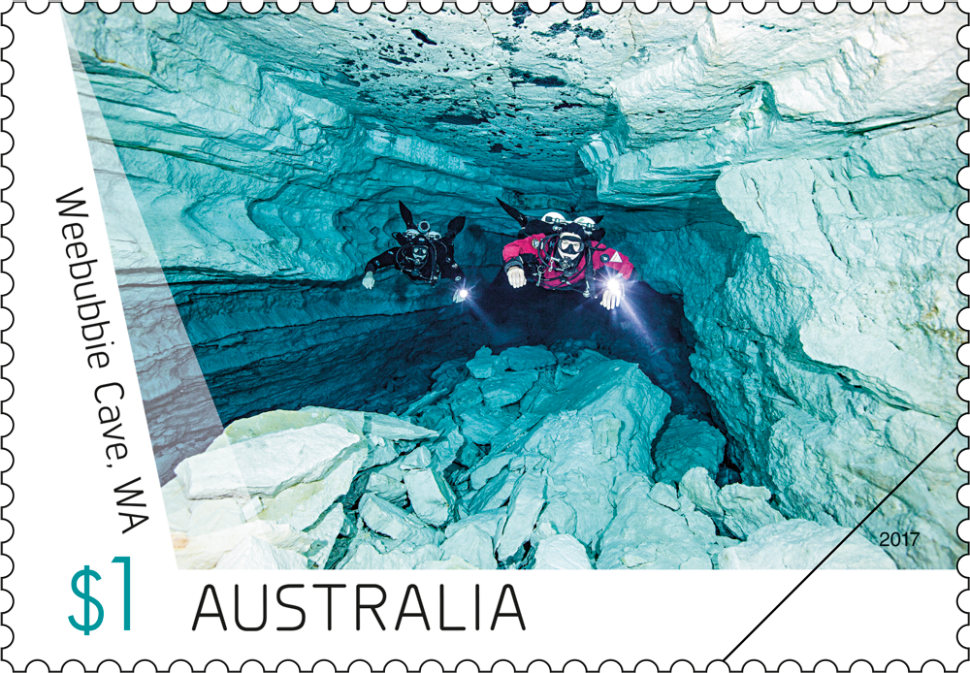Australia’s world-renowned natural assets include many regions of virtually untouched wilderness. This stamp issue, the second in a series, includes three areas noted for natural beauty and cultural significance.
Victoria’s Alpine National Park covers much of the higher areas of the Great Dividing Range, including Mount Bogong, subalpine woodland and the grasslands of the Bogong High Plains. The Blue Mountains National Park, located west of Sydney, is one of the country’s most frequently visited parks, and includes the Three Sisters rock formation. Judbarra/Gregory National Park, the largest in the Northern Territory, boasts spectacular ranges, gorges, birdlife and rock art and incorporates the traditional lands of several Indigenous peoples.
Designer
Janet Boschen, Boschen Design
Products released in this issue
- Stamps 1 x $2.75, 1 x $5.35, 1 x $7.40
- Covers (blank pictorial and gummed)
- Stamp pack
- Maxicards
- Sheetlet of 5 x $2.75
- Chequebook 20 x 5 x $2.75
- Gutter strips
Technical specifications
- Issue date
- 1 October 2014
- Issue withdrawal date
- tbc
- Denominations
- 1 x $2.75, 1 x $5.35, 1 x $7.40
- Stamp design
- Boschen Design
- Product design
- John White, Australia Post Design Studio
- Paper - gummed
- Tullis Russell
- Printer - gummed
- RA Print
- Paper self-adhesive
- B100
- Printer self-adhesive
- RA Print
- Printing process
- Lithography
- Stamp size
- 26mm x 37.5mm
- Perforations
- 14.6 x 13.86
- Sheet layout
- Module of 50
- FDI postmark
- Hill Top, NSW 2575
- FDI withdrawal date
- 30 November 2014
Victoria’s Alpine National Park covers much of the higher areas of the Great Dividing Range, including Victoria's highest point, Mount Bogong, subalpine woodland and the grasslands of the Bogong High Plains. The park’s north-eastern boundary is along the border with New South Wales, where it abuts Kosciuszko National Park. It protects many endangered species, including the Mountain Pygmy Possum, Spotted Tree Frog, She-oak Skink and Broad-toothed Mouse. The park is popular in summer with bushwalkers and walking tracks lead to most peaks. The Alpine National Park was added to the Australian National Heritage List in November 2008, as one of 11 areas constituting the Australian Alps National Parks and Reserves.
The Blue Mountains National Park, located west of Sydney on the eastern side of the Great Dividing Range, is one of the country’s most frequently visited parks. The Blue Mountains and the Great Dividing Range were formed around 50 million years ago, when the layers of sedimentary rocks within the Sydney Basin were raised up. Subsequently, volcanic flows covered areas of the mountains in basalt, which wore away, leaving occasional outcrops on the high peaks. The spectacular Three Sisters rock formation, perhaps the best known feature of the park, is composed of sandstone that contains horizontal layers of erosion-resistant ironstone. The distinctive rock features in the legends of the Gundungurra people, the traditional owners of the land. Other popular attractions of the park include precipitous cliffs around Blackheath and the Katoomba Scenic Railway, the world’s steepest train track. In 2000, the Greater Blue Mountains Area, which incorporates the park, was placed on the World Heritage List.
Judbarra/Gregory National Park, the largest national park in the Northern Territory, boasts spectacular ranges, gorges and rock art. It incorporates the traditional lands of several Indigenous groups and spans the boundary between two major language families. The extensive rock art of the Judbarra region is considered to represent a distinct art province. It is particularly noted for the proliferation of the engraved and painted human figure. The park is also significant for its birdlife; it supports the eastern subspecies of the White-quilled Rock-Pigeon, small numbers of the endangered Gouldian Finch and other species including the Chestnut-backed Buttonquail and the Yellow-rumped Mannikin. The park is jointly managed by the government and traditional owners, but from 2021 it will be entirely managed by traditional owners and its official name will be Judbarra National Park.
This content was produced at the time of the stamp issue release date and will not be updated.
We don’t want you to miss out on opportunities that support your collecting and make it even more enjoyable.
Benefits:
• Exclusive offers
• Pre-order opportunities
• Offers a great collecting experience
your collectables

